#8 May 1912
Text


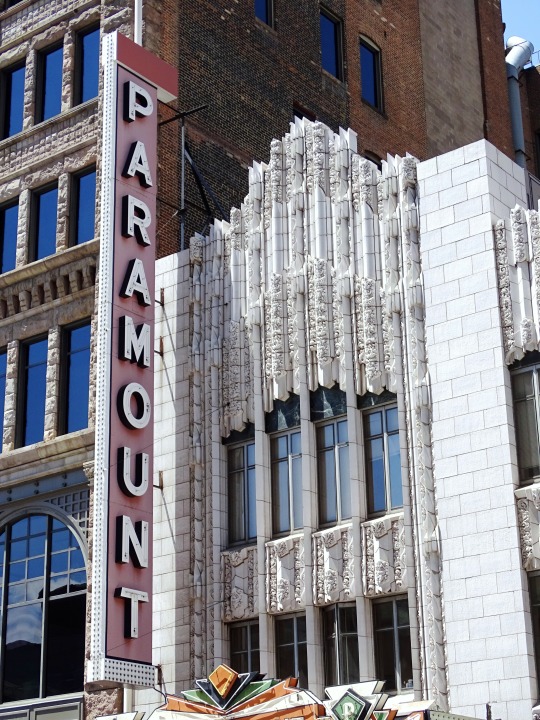
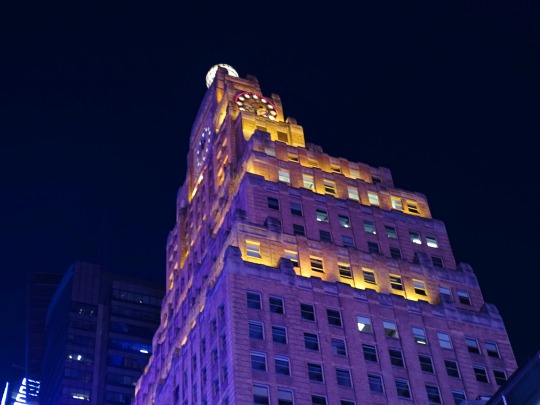

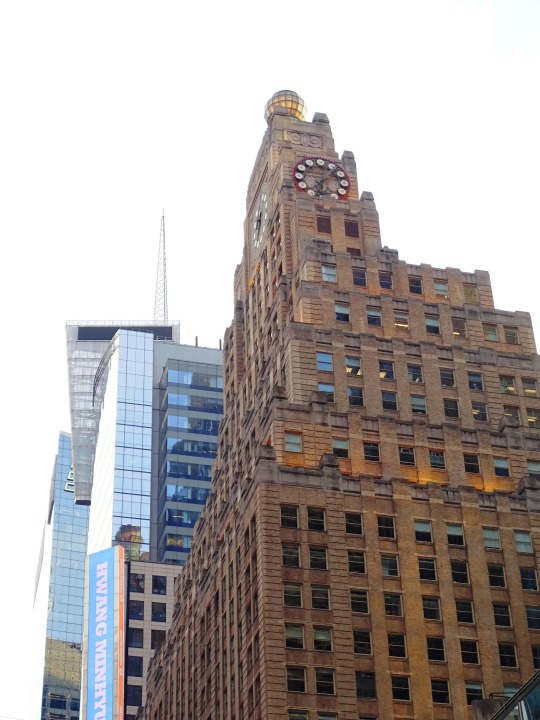

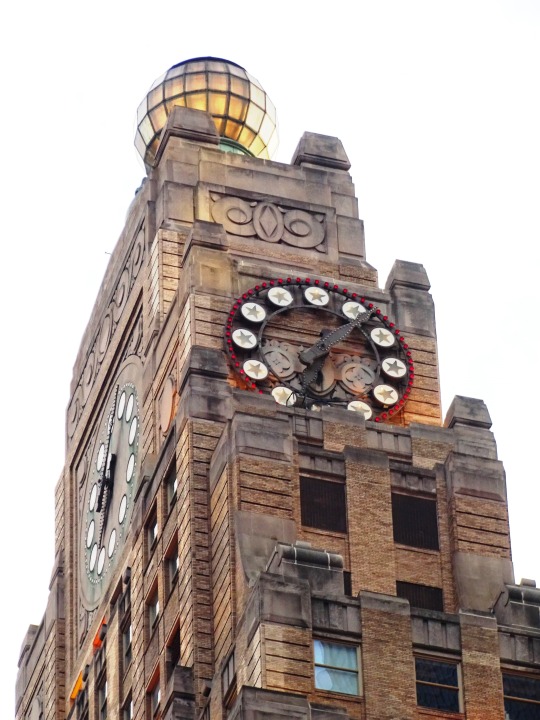
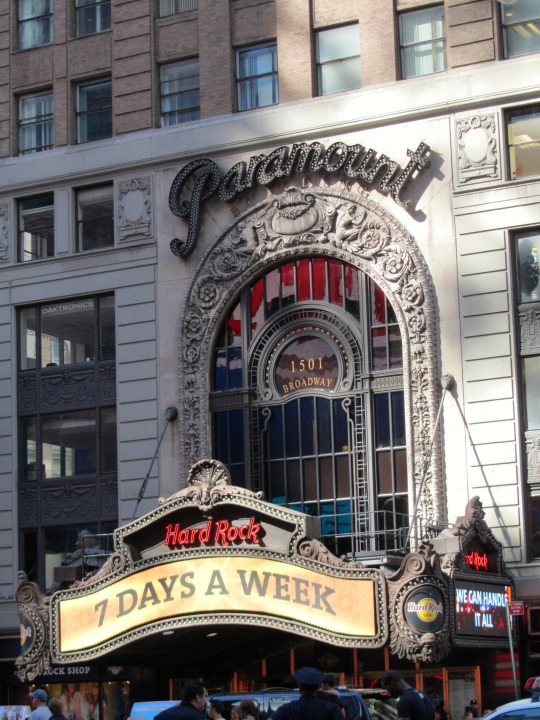
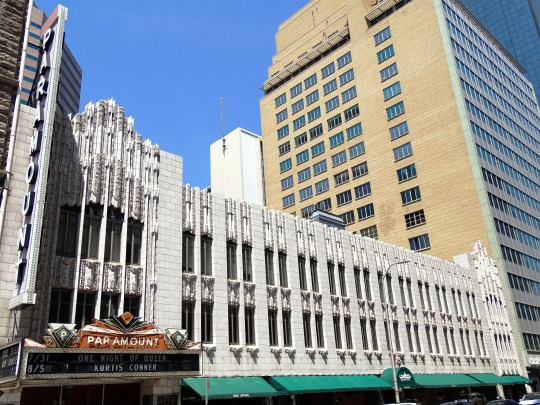




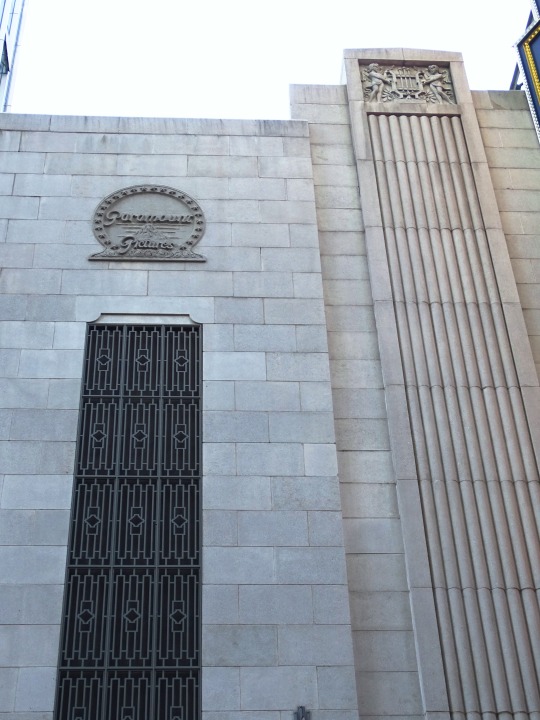

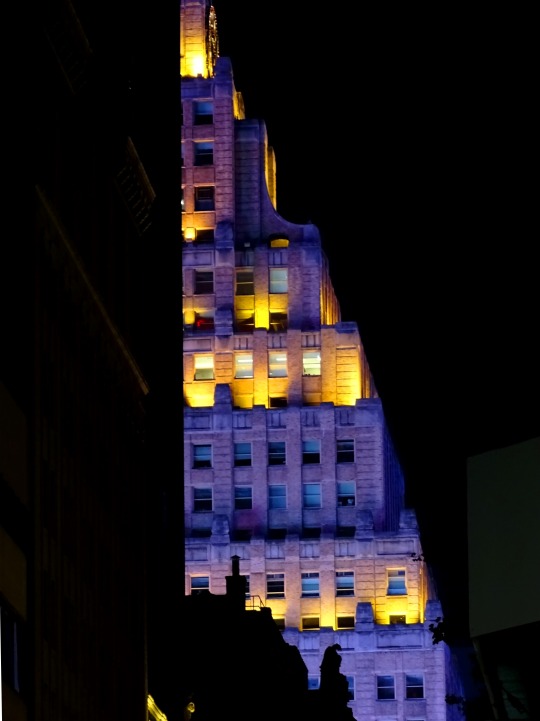
Paramount Pictures was founded on May 8, 1912.
#Paramount Theatre#Denver#Boston#Art Deco#Colorado#Massachusetts#tourist attraction#Paramount Building#Midtown Manhattan#New York City#Paramount Pictures#founded#8 May 1912#anniversary#US history#USA#original photography#travel#vacation#exterior#logo#façade#landmark#clock#architecture#cityscape#neon sign
2 notes
·
View notes
Text














BOBSTROLOGY
A completely serious presentation by @pegasusdrawnchariots and oatflatwhite
written version under the cut!
♈️Patrick O’Keefe [April 3 1926]
♈️Robert Sink [April 3 1905]
♈️John Julian [5 April 1924]
♈️Renée Lemaire [10 April 1914]
♈️James Miller [11 April 1924]
♈️Walter “Smokey” Gordon [April 15 1920]
♉️~Ronald Speirs [April 20 1920]
♉️Alton More [April 22 1920]
♉️Henry Jones [27 April 1924]
♉️Edward “Babe” Heffron [May 16 1923]
♉️John Martin [May 12 1922]
♉️Joseph Liebgott [May 17 1915]
♉️Norman Dike [May 19 1918]
♉️William Guarnere [April 28 1923]
♊️David Webster [June 2 1922]
♊️George Luz [June 17 1921]
♊️Roy Cobb [June 18 1914]
♋️Frederick “Moose” Heyliger [June 23 1916]
♋️Albert Blithe [June 25 1923]
♋️Donald Hoobler [28 June 1922]
♋️Thomas Meehan [8 July 1921]
♋️John Janovec [9 July 1925]
♋️Robert “Popeye” Wynn [July 10 1921]
♋️James "Moe" Alley [July 20 1922]
♌️~Burton “Pat” Christenson [July 23 1922]
♌️Eugene Jackson [29 July 1922]
♌️Donald Malarkey [July 31 1921]
♌️Edward Tipper [3 August 1921]
♍️Floyd Talbert [August 26 1923]
♍️Alex Penkala [August 30 1922]
♍️William Dukeman [3 September 1921]
♎️Eugene Roe [October 17 1922]
♎️Harry Welsh [September 27 1918]
♎️Lewis Nixon [September 30 1918]
♎️Ralph Spina [October 5 1919]
♎️Thomas Peacock [October 9 1923]
♏️Denver “Bull” Randleman [November 20 1920]
♑️Lynn “Buck” Compton [December 31 1921]
♑️Antonio Garcia [January 17 1925]
♒️Richard "Dick" Winters [January 21 1918]
♒️Herbert Sobel [January 26 1912]
♒️Carwood Lipton [January 30 1920]
♒️Warren “Skip” Muck [January 31 1922]
♓️Lester Hashey [23 February 1925]
♓️Charles “Chuck” Grant [1 March 1922]
♓️Robert Strayer [March 2 1912]
♓️Wayne “Skinny” Sisk [March 4 1922]
♓️Frank Perconte [March 10 1917]
♓️Darrell “Shifty” Powers [March 13 1923]
♓️Joseph Toye [March 14 1919]
6 Aries 🥉
8 Taurus 🥇
3 Gemini
7 Cancer 🥈
4 Leo
3 Virgo
5 Libra
1 Scorpio
0 Sagittarius 🥄
2 Capricorn
4 Aquarius
7 Pisces 🥈
10 🔥
13 🪨
12 💨
15 💧
20 cardinal
17 fixed
13 mutable
22 masculine
28 feminine
#band of brothers#hbo war#bobedit#hbowaredit#bobstrology#astrology#liz makes things#disclaimer: our interpretation is ironclad. we alone decide the law. argue w the wall.#< we say as an aries and scorpio with renee and bull in our corners <3
192 notes
·
View notes
Text

Giacomo Balla (Italian, 1871-1958)
Dinamismo di un cane al guinzaglio (Dynamism of a #Dog on a Leash), 1912
oil on canvas, framed: 45 1/2 x 53 1/8 x 3 3/4 in. (115.57 x 134.94 x 9.53 cm)
Buffalo AKG Art Museum 1964:16
“Balla painted this amusing study of a skittering dachshund and the staccato steps of his or her owner in May 1912 while visiting one of his students, the Contessa Nerazzini, at Montepulciano, near Siena. The lively background, with its vibrating and contrasting streaks of pink and green, is said to represent the white dust of the Tuscan countryside shimmering under the bright summer sun. The feet of the woman, the leash, and the dog’s body from nose to tail are all blurred and repeated. To enhance the impression of speed, Balla painted the ground using diagonal lines and placed his signature and the date at a dynamic angle. This rhythmic gesture also extends to the frame, which both contains and continues the composition.”
#animals in art#european art#20th century art#painting#oil painting#1910s#Italian art#Futurism#Buffalo AKG Art Museum#Giacomo Balla#modern art#dog#dogs in art
63 notes
·
View notes
Text
Chapter 5 New Storm Info
With 1.4 we got some more info about the "Storm." Below the read more will be spoilers to chapter 5.
Starting with what 37 has about the storm, at first we learn what knows it as and what they think of it. As Apeiron is immune to the storm and isolated from the world they have different information and thoughts on it.

Pneuma is a Greek word for "breath", but if used in a religious context it can mean "soul." (I don't know what to make of this myself.)
They put the current year as 2007, as it would be that year if the storm never happened. So that means the storm has been around for 7ish years.
Later on we learn more about the dates and the fact that 37 and her mother predicted the years it happened.

The years on the monitor are
1999 - 1996
2000 - 1985
2003 - 1977
2004 - 1930s
2006 - 1912
2007 - 1966
1930s is taken from dialog, and 1977 is brought up in the report in The Star.
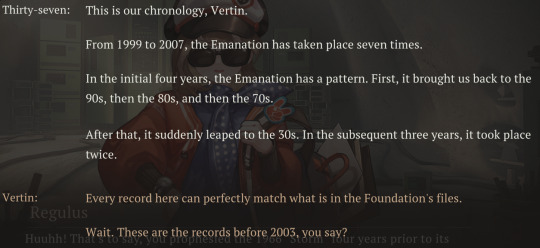

This tells us a few key things, first off that, excluding the latest storm there is a pattern that was able to be used to predict future storms. The monitor doesn't have the 1966 to 1929 or the 1929 to 1913 storms, tho the latter was messed with the Manus so it may break the pattern. Other key points it gives is the years of previous storms and the fact that the storm does not just move back in time, it also can jump forward as with the 1912 to 1966 storm. It could be inferred from the Green Lake event, but not directly stated. (Side note, 37 says 7 storms, the monitor shows 6, and adding the 1929 to 1913 storm it makes a total of 8.)
#reverse 1999#r1999#reverse: 1999#r1999 The Prisoner in the cave#r1999 1.4#r1999 37#the fact that it doesn't just go back is going to make the timeline so much worse#more stuff on the storm soon#i have the stars report to go through#and asymmetrical nuclide R to talk about
56 notes
·
View notes
Text
10 years old Anastasia Romanov Kremlin letter, [29 May 1912].



How is your health. It is hot here 30 degrees in the sun. I just got back from Neskuchnyi [1]. There was an outing in the morning and there was a worship service in Uspensky cathedral [2]. It was so sad to leave Levadia [3]. and I feel terribly sad that you are not here. Mari [4] and I live in the blue room Olga and Tatiana in the red, Nikita Fyodor and Andrei have tea with us and play here. Do you have a stick? Nikita is terribly naughty. It was terribly hot on the train.
“ Darling Shura,
Olga, Mama, Papa and Tatiana were traveling in a noble [5], like in Kiev. I feel better but sometimes bad again. Tomorrow there will be an inauguration of the monument [6]. Do you think you will come soon or not. They say that we will raise the Standard [7] on June 29, so you need to hurry. Now after Moscow I want to go to Levadia. We made a stop in Harkov. There were Ladies with Mama and Papa had reception of the deputies. Tatiana received a good gift today for her celebration [8]. We had a marvelous voyage from Yalta to Sevastopol [9], the weather was hot and marvelous in Sevastopol [10].
Will stay in touch. Big kiss to you. With love
1. The oldest park in Moscow.
Truly yours Anastasia
The envelope is plain because people like to read, when it says Moscow or Standard [11]. ”
2. Principal church in the Kremlin.
3. Tsarist summer palace in the Crimea.
4. Grand Duchess Maria.
5. Slang for a train cart for nobility.
6. Tsar Alexander III monument inaugurated on May 30, 1912.
7. Navy flag, the main Imperial yacht of the Tsar had the same name – The Standard.
8. May 29th is Grand Duchess Tatiana’s birthday.
9. Cities on the Black Sea.
10. A city in the Crimea.
11. The yacht, Standard.
23 notes
·
View notes
Text
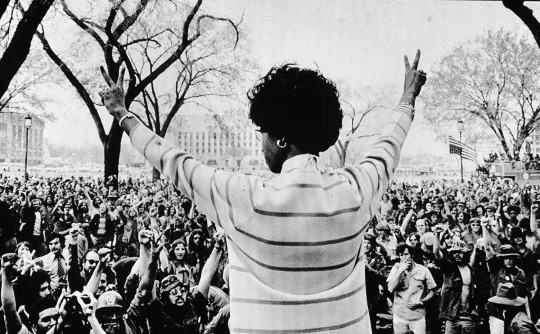
Black women have made important contributions to the United States throughout its history. However, they are not always recognized for their efforts, with some remaining anonymous and others becoming famous for their achievements. In the face of gender and racial bias, Black women have broken barriers, challenged the status quo, and fought for equal rights for all. The accomplishments of Black female historical figures in politics, science, the arts, and more continue to impact society.
Marian Anderson (Feb. 27, 1897–April 8, 1993)

Underwood Archives / Getty Images
Contralto Marian Anderson is considered one of the most important singers of the 20th century. Known for her impressive three-octave vocal range, she performed widely in the U.S. and Europe, beginning in the 1920s. She was invited to perform at the White House for President Franklin Roosevelt and First Lady Eleanor Roosevelt in 1936, the first African American so honored. Three years later, after the Daughters of the American Revolution refused to allow Anderson to sing at a Washington, D.C. gathering, the Roosevelts invited her to perform on the steps of the Lincon Memorial.
Anderson continued to sing professionally until the 1960s when she became involved in politics and civil rights issues. Among her many honors, Anderson received the Presidential Medal of Freedom in 1963 and a Grammy Lifetime Achievement Award in 1991.
Mary McLeod Bethune (July 10, 1875–May 18, 1955)
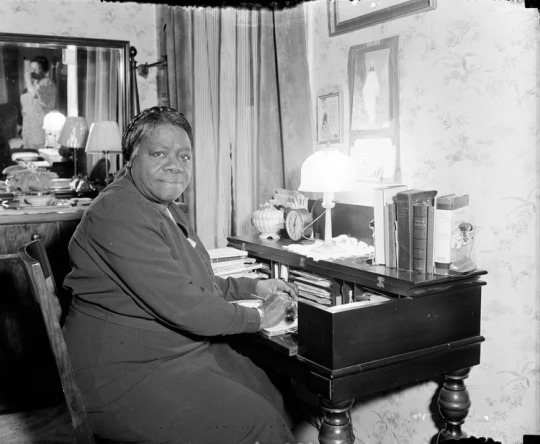
PhotoQuest / Getty Images
Mary McLeod Bethune was an African American educator and civil rights leader best known for her work co-founding the Bethune-Cookman University in Florida. Born into a sharecropping family in South Carolina, the young Bethune had a zest for learning from her earliest days. After stints teaching in Georgia, she and her husband moved to Florida and eventually settled in Jacksonville. There, she founded the Daytona Normal and Industrial Institute in 1904 to provide education for Black girls. It merged with the Cookman Institute for Men in 1923, and Bethune served as president for the next two decades.
A passionate philanthropist, Bethune also led civil rights organizations and advised Presidents Calvin Coolidge, Herbert Hoover, and Franklin Roosevelt on African American issues. In addition, President Harry Truman invited her to attend the founding convention of the United Nations; she was the only African American delegate to attend.
Shirley Chisholm (Nov. 30, 1924–Jan. 1, 2005)
Don Hogan Charles / Getty Images
Shirley Chisholm is best known for her 1972 bid to win the Democratic presidential nomination; she was the first Black woman to make this attempt in a major political party. However, she had been active in state and national politics for more than a decade and had represented parts of Brooklyn in the New York State Assembly from 1965 to 1968. She became the first Black woman to serve in Congress in 1968. During her tenure, she co-founded the Congressional Black Caucus. Chisholm left Washington in 1983 and devoted the rest of her life to civil rights and women's issues.
Althea Gibson (Aug. 25, 1927–Sept. 28, 2003)

Reg Speller / Getty Images
Althea Gibson started playing tennis as a child in New York City, winning her first tennis tournament at age 15. She dominated the American Tennis Association circuit, reserved for Black players, for more than a decade. In 1950, Gibson broke the tennis color barrier at Forest Hills Country Club (site of the U.S. Open); the following year, she became the first African American to play at Wimbledon in Great Britain. Gibson continued to excel at the sport, winning both amateur and professional titles through the early 1960s.
Dorothy Height (March 24, 1912–April 20, 2010)

Chip Somodevilla / Getty Images
Dorothy Height has been described as the godmother of the women's movement because of her work for gender equality. For four decades, she led the National Council of Negro Women (NCNW )and was a leading figure in the 1963 March on Washington. Height began her career as an educator in New York City, where her work caught the attention of Eleanor Roosevelt. Beginning in 1957, she led the NCNW and also advised the Young Women's Christian Association (YWCA). She received the Presidential Medal of Freedom in 1994.
Rosa Parks (Feb. 4, 1913–Oct. 24, 2005)
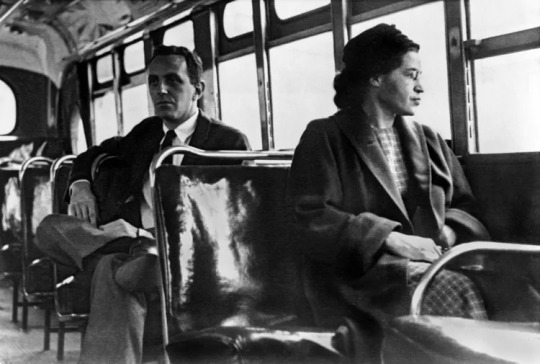
Underwood Archives / Getty Images
Rosa Parks became active in the Alabama civil rights movement after marrying activist Raymond Parks in 1932. She joined the Montgomery, Alabama, chapter of the National Association for the Advancement of Colored People (NAACP) in 1943 and was involved in much of the planning that went into the famous bus boycott that began the following decade. Parks is best known for her December 1, 1955, arrest for refusing to give up her bus seat to a White rider. That incident sparked the 381-day Montgomery Bus Boycott, which eventually desegregated that city's public transit. Parks and her family moved to Detroit in 1957, and she remained active in civil rights until her death.
Augusta Savage (Feb. 29, 1892–March 26, 1962)
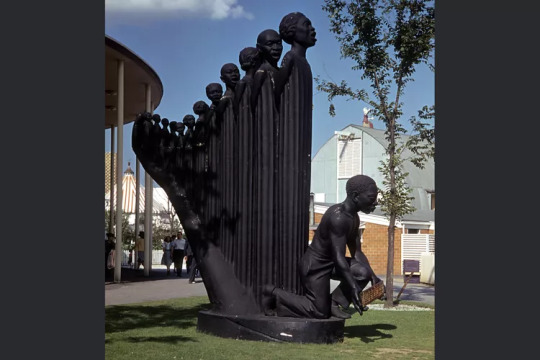
Archive Photos / Sherman Oaks Antique Mall / Getty Images
Augusta Savage displayed an artistic aptitude from her youngest days. Encouraged to develop her talent, she enrolled in New York City's Cooper Union to study art. She earned her first commission, a sculpture of civil rights leader W.E.B. Du Bois, from the New York library system in 1921, and several other commissions followed. Despite meager resources, she continued working through the Great Depression, making sculptures of several notable Black people, including Frederick Douglass and W. C. Handy. Her best-known work, "The Harp," was featured at the 1939 World's Fair in New York, but it was destroyed after the fair ended.
Harriet Tubman (1822–March 20, 1913)

Library of Congress
Enslaved from birth in Maryland, Harriet Tubman escaped to freedom in 1849. The year after she arrived in Philadelphia, Tubman returned to Maryland to free her family members. Over the next 12 years, she returned nearly 20 times, helping more than 300 enslaved Black people escape bondage by ushering them along the Underground Railroad. The "railroad" was the nickname for a secret route that enslaved Black people used to flee the South for anti-slavery states in the North and to Canada. During the Civil War, Tubman worked as a nurse, a scout, and a spy for Union forces. After the war, she worked to establish schools for formerly enslaved people in South Carolina. In her later years, Tubman also became involved in women's rights causes.
Phillis Wheatley (May 8, 1753–Dec. 5, 1784)

Culture Club/Hulton Archive/Getty Images
Born in Africa, Phillis Wheatley came to the U.S. at age 8, when she was captured and sold into enslavement. John Wheatley, the Boston man who enslaved her, was impressed by Phillis' intellect and interest in learning, and he and his wife taught her to read and write. The Wheatleys allowed Phillis time to pursue her studies, which led her to develop an interest in poetry writing. A poem she published in 1767 earned her much acclaim. Six years later, her first volume of poems was published in London, and she became known in both the U.S. and the United Kingdom. The Revolutionary War disrupted Wheatley's writing, however, and she was not widely published after it ended.
Charlotte Ray (Jan. 13, 1850–Jan. 4, 1911)
Charlotte Ray has the distinction of being the first African American woman lawyer in the United States and the first woman admitted to the bar in the District of Columbia. Her father, active in New York City's Black community, made sure his young daughter was well educated; she received her law degree from Howard University in 1872 and was admitted to the Washington, D.C., bar shortly afterward. Both her race and gender proved to be obstacles in her professional career, and she eventually became a teacher in New York City instead.
#10 of the Most Important Black Women in U.S. History#Black Women#Black Women Matter#Black Lives Matter#us history
217 notes
·
View notes
Text
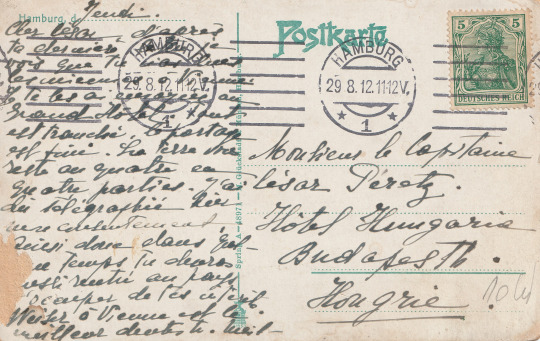

A rather wordy postcard sent from Hamburg on Thursday, 29 August 1912 to a Captain Cesar Peretz staying at the Hotel Hungaria in Budapest.
According to an article in Românul newspaper (Bucharest) from 8 (20) May 1899, Peretz served in the cavalry of the Romanian army and was promoted from lieutenant to captain on 10 May 1899.
His name appears again in an article from Adevĕrul (Bucharest), on 2 July 1908, where he served as a witness alongside the surgeon Thoma Ionescu, and the politicians Mihail G. Cantacuzino and Ion Mitilineu, at a duel between the landowner George Ulise Negropontes and Mihai "Mișu" Marghiloman (the son of Iancu Marghiloman and brother of future Prime Minister Alexandru Marghiloman), apparently because of an insulting letter Marghiloman published in the newspaper Dimineața. The police attempted to stop the duel, and the two men made up, it seems:
"Those who witnessed this duel say that both combatants had a firm attitude on the field and showed great courage; it was an emotional scene. Negropontes extended his hand to Marghiloman, recognizing the latter's chivalry. Both adversaries reconciled, regretting what had happened and assuring each other that they would preserve their friendship in the future."
Cesar Peretz died in January 1929; a funeral service was held in Bucharest's Silvestru Church on 27 January of that year.
From my personal collection.
24 notes
·
View notes
Text
As we near the end of pride month, I would like to celebrate a number of LGBTQ+ figures that may be unknown to some.
Alan Turing (1912 - 1954)

Alan Turing was British mathematician, cryptologist, and computer scientist who is credited as the founder of modern computer science and artificial intelligence. During World War II, he worked for Britain’s Government Code and Cypher School at Bletchley Park, leading the effort to decrypt German naval intelligence. Turing created a number of methods and devices that helped crack the German Enigma Code and allowed the allies to read German intelligence and allow allied ships to avoid U-Boat ‘Wolf-packs’. Turing’s work was pivotal in helping the allied victory in the war. Sadly, Turing was arrested in 1952 for homosexual acts and convicted of ‘gross indecency’. He accepted chemical castration as an alternative to prison. In 1954, was found dead from suicide by cyanide poisoning. It’s believed that Turing’s work helped shortened the war by several years.
Harvey Milk (1930 - 1978)

Harvey Milk was a politician and the first openly gay man to serve in public office in the United States. Milk moved to San Francisco in 1972 and took up residence in the Castro District, a neighborhood that was heavily populated by lesbians and gay men, and opened a camera store called Castro Camera. Milk became involved in politics because of civic issues and policies that drew his ire. Homosexuality was still heavily persecuted in the city at the time. In 1973, he announced his declared his candidacy for city supervisor. However, he faced a negative reception from the established gay political scene and lost the election. He lost his second election two years later. By this point, Milk had become a leading figure in the gay community, known as the “Mayor of Castro Street”, and had allies that included Mayor George Moscone, Assembly Speaker Willie Brown, and future Senator Diane Feinstein. Finally, in 1978, Milk was elected to the San Francisco Board of Supervisors, inaugurated January 8. During his tenure he was involved in a number of issues including childcare, housing, and police reform. Sadly, he only served eleven months in office before he, along with George Moscone, was assassinated by former supervisor Dan White, who was against many of Milks policies. Today, Harvey Milk is considered an icon of San Francisco and a martyr of the LGBTQ movement.
Rose Cleveland (1846 - 1918)

Rose Cleveland was the sister of U.S. President Grover Cleveland and, as such, acted as First Lady of the United States from his inauguration until he married Frances Folsom in 1886. After leaving the White House she became a teacher, writer, and lecturer in Indiana. At age 44 she started a romantic relationship with wealthy widow Evangeline Marrs Simpson. They exchanged numerous letters, some with explicitly erotic imagery. The relationship cooled after six years after Simpson married Episcopal preacher Bishop Henry Whipple, despite Cleveland’s protests. After Whipple died in 1901, their relationship resumed. Cleveland and Evangeline moved to Bagni di Lucca, Italy in 1910, where they cared for Evangeline’s ill brother and settled there after his death. They lived there together until Cleveland died during the 1918 Influenza Pandemic. After her death, Evangeline wrote “the light has gone out for me…the loss of this noble and great soul is a blow that I shall not recover from”. Evangeline died in 1930 and is buried in the cemetery in Italy next to Rose. Many of their letters remain an important part of LGBTQ history.
Andy Warhol (1928 - 1987)

Andy Warhol was an American artist, director, and producer who was a leading figure in the pop art movement of the 1950’s to 1970’s. This movement focused on combining fine art with elements of popular culture, hence the name pop art. Warhol’s paintings focused on mass produced consumer goods and celebrity portraits. Warhol’s most famous pieces include Campbell’s Soup Cans (1962), Green Coca-Cola Bottles (1962), Marilyn Diptych (1962), and Mao Tse-Tung (1972). He also directed and produced experimental films including Empire (1964) and Chelsea Girls (1966). His New York City gallery, The Factory, was a popular gathering place for artists, musicians, actors, socialites, and celebrities. In 1966, he became the manager of rock band The Velvet Underground, which became the house band of The Factory. In 1969, he created Interview magazine, which features interviews with celebrities, artists, musicians, and other creatives. Warhol lived openly as a gay man before the gay liberation movement and had a series of male partners. He said his sexuality was a major influence of his work. Warhol died on February 22, 1987 due to complications from a gallbladder surgery. Andy Warhol is regarded as one of America’s most famous visual artists.
Gladys Bentley (1907 - 1960)

Gladys Bentley was an American blues singer, pianist, and entertainer during the Harlem Renaissance of the 1920’s and 1930’s. Her career took off after performing at Harry Hansberry’s Clam House, a well known gay speakeasy in New York City. She gained popularity as a black, lesbian, cross dressing performer. She performed in men’s clothes and was backed up by a chorus of drag queens. She sang with a deep, growling voice, and took popular songs and added her own raunchy lyrics while flirting with women in the audience. Despite being openly lesbian in the beginning of her career, she later started wearing dresses and married during the more conservative 1950’s in order to adapt to the mindset of the time period. Bentley died of pneumonia in 1960 and is remembered as an icon of both the LGBTQ and Black communities.
Willem Arondeus (1894 - 1943)

Willem Arondeus was an openly gay Dutch artist and writer who fought for the Dutch resistance against Nazi occupation during World War II. Prior to the war, he wished to work as an artist, but he found very little popularity, so he turned to writing instead. After Germany occupied The Netherlands, Arondeus joined the Resistance Movement, publishing underground periodicals and forging documents. His most famous endeavor, was his involvement in the bombing of the Amsterdam Civil Registry in 1943. The Civil Registry was established following the German invasion and occupation of the Netherlands in 1940 and was used to keep records of all residents of the country and identified those who were Jewish, resistance members, and those who could be called up for forced labor. On March 27, resistance members, including Arondeus, entered the building by disguising themselves as police officers and sedating the guards. They then piled all the documents on the floor and set of explosives. They fire department delayed putting out the fire and then doused the whole building with water. 800,000 ID cards were destroyed in total. Unfortunately, someone betrayed Arondeus and he was subsequently arrested, tried, and sentenced to death. Before his execution, his last words were “tell people that homosexuals are not cowards”.
Gilbert Baker (1951 - 2017)

Gilbert Baker was an American artist and designer who is the original creator of the LGBTQ Rainbow Pride flag. He joined the anti-war movement in the 1970’s where he met, and became friends with, Harvey Milk. Milk commissioned Baker to create a flag that could represent gay pride. Using the American flag as inspiration, Baker hand sew the original flag, which had eight colored stripes (two more than the modern version). Each color represents a different aspect important to the gay community: (from hot pink to violet) sex, life, healing, sunlight, nature, magic, serenity, and spirit. The flag was first flown in San Francisco on June 25, 1978, for gay pride day. Baker died in 2017, and is regarded as a major figure in the pride movement. Today there are many different variations of the Pride flag, with each one representing a different group from the gay community
Larry Kramer (1935 - 2020)

Larry Kramer was an American playwright, author, film producer, and gay rights activist, who worked to bring awareness to the AIDS crisis in the 1980’s. He began his career writing scripts for Columbia pictures, winning an Academy Award for the 1969 film Women in Love. After witnessing the disease later known as AIDS spread among his friends, Kramer became involved in gay activism. In 1982, Kramer co-founded Gay Men’s Health Crisis, now known as GMHC, which provides social services for those infected with AIDS, along with testing, legal assistance, and mental health support. It’s currently the largest AIDS assistance organization in the world After, growing frustrated with the government paralysis and apathy towards gay men, he wanted to engage in further action, so in 1987, he helped found the AIDS Coalition to Unleash Power (ACT UP). ACT UP is a direct action protest organization that works to change legislation and public policy to end the AIDS crisis. ACT UP soon had chapters in cities all over the United States. The movement then spread internationally, with separate movements being established in other countries including the United Kingdom, Canada, France, India, and Germany. In 1992, Kramer wrote the play ‘The Destiny of Me’, which follows a character from his 1985 play ‘The Normal Heart’ seeking experimental treatment for AIDS. The play was a finalist for the Pulitzer Prize. The Normal Heart debuted on Broadway in 2011, and was adapted into an HBO movie in 2014. Kramer died of pneumonia on May 27, 2020.
Bessie Smith (1894 - 1937)

Bessie Smith was an American blues singer, nicknamed the ‘Empress of Blues’. She was the most popular female blues singer of the 1930’s. Smith stated her career busking in the streets to help her family financially. In 1912, she auditioned for a music troupe that included blues legend Ma Rainey. She was originally hired as a dancer. Smith began her solo career at the 81 Theater in Atlanta, Georgia. She signed with Columbia Records in 1923. She made 160 recordings for Columbia, accompanied by some of the most famous musicians of the day including Louis Armstrong, Coleman Hawkins, Fletcher Henderson, and Sidney Bechet. She became the highest paid black entertainer of the day. Throughout her career, smith was apologetically herself, having affairs with both men and women. Some speculate her bisexuality was hinted at in the lyrics of her songs, including ‘boy in the boat’: “when you see two women walking hand in hand/Just look ‘em over and try to understand/They’ll go to those parties/Having the lights down low/Only those parties where women can go”. Sadly, her career was cut short in 1937, when she died at the age of 43 due to injuries sustained in a car accident enroute to Chattanooga, Tennessee. Her funeral was attended by more then 5,000 people. In 1989, she was inducted into the Rock and Roll Hall of Fame, with an entry saying her reign was “definitive, unprecedented, and glorious”.
James Baldwin (1924 - 1987)

James Baldwin was an American writer who gained critical acclaim across multiple forms, including essays, novels, plays, and poems. In 1953, he published his first book ‘Go Tell it on the Mountain’, a semi-autobiographical novel which tells the story of a young African American man who grew up in Harlem, New York City, and his relationship with his family and the Pentecostal Church. In 1998, Modern Library ranked the book 39th on its list of 100 best English language novels of the 20th century. In 2005, Time Magazine included the book in its list of the 100 Best Novels from 1923 (when Time was first published) to 2005. In 1956, Baldwin wrote ‘Giovanni’s Room’ whose main character was a gay American man living in Paris, France, who began an affair with an Italian bartender named Giovanni, whom he met at a Gay bar. Gay and Bisexual men are also frequently featured in his other works. His unfinished manuscript Remember This House was expanded and adapted in the 2016 Oscar nominated documentary I Am Not Your Negro, which won the BAFTA Award for Best Documentary. His 1974 novel ‘If Beale Street Could Talk’ was adapted into a movie in 2018, which won Best Supporting Actress for Regina King at the 91st Academy Awards, where the film was also nominated for Best Adapted Screenplay and Best Original Score. King also received Best Supporting Actress at the 76th Golden Globe Awards and 24th Critics Choice Awards. Both the National Board of Review and the American Film Institute included it in their top 10 films of 2018. Today, James Baldwin is considered one of the most famous LGBTQ writers in American history.
#history#queer pride#pride month#queer stuff#queer history#lgbtq#bisexual#homoseuxality#gay pride#pride 2023
46 notes
·
View notes
Text
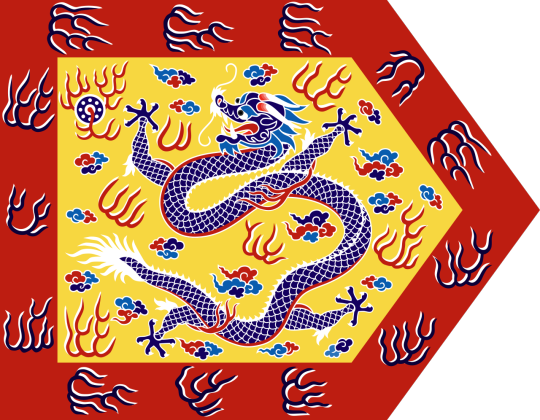
Historical Flag Wars Round 1
The first round of the Historical Flag Wars starts today! Which flag are you rooting for?
Here are the brackets for Round 1:
1. Republic of Rotuma vs. Sultanate of Sulu
2. Peru (May 1822) vs. Kingdom of Amber
3. Green Mountain Boys vs. Taipei, Taiwan (1981-2010)
4. Kingdom of Laos vs. Kingdom of Abemama
5. State of Deseret vs. Guilford Courthouse Flag
6. Mohanpur State vs. Attributed flag of Blackbeard
7. Nepal (1856-1930) vs. Empire of Brazil
8. Burma (1943-1945) vs. Latvian Soviet Socialist Republic
9. Wiphala of Tupac Katari vs. Mamluk Sultunate (attributed)
10. Islands of Refreshment vs. Imperial State of Iran
11. Union Mark of Norway and Sweden vs. Kingdom of Prussia (1892-1918)
12. Jewish Combat Organization vs. Kingdom of Kandy
13. Kingdom of Manipur (1891–1907) vs. International Revolutionary People's Guerrilla Forces
14. Venice (1922-1977, de facto) vs. International Brigades
15. Sultanate of Zanzibar (1963–1964) vs. State of Muskogee
16. Maine (1901-1909) vs. Taymyr Autonomous Okrug
17. Tibet vs. Dutchy of Brittany
18. Ryukyu Kingdom vs. Byelorussian Soviet Socialist Republic
19. Duchy of Milan vs. Republic of Yucatán
20. People’s Republic of Korea vs. Halliste Parish, Estonia
21. Jeju Province (1969–2009) vs. Republic of China (1912–1928)
22. House flag of Nedlloyd vs. Historical Mapuche Flag
23. Kingdom of Ireland vs. Starry Plough Flag
24. Royal standard of the Joseon Dynasty vs. Flag of David IV the Builder
25. Army of the Three Guarantees vs. Raven Banner
26. Iraq (1959–1963) vs. Republic of Formosa
27. Principality of Moldavia vs. Eureka Flag
28. Kingdom of Sikkim vs. Republic of Anguilla
29. Republic of the Rif vs. West Indies Federation
30. Bedford Flag vs. Ethiopian Empire
31. Rägavere Parish, Estonia vs. Unidentified Flag of the Kingdom of Benin
32. Comecon vs. Naval flag of the Duchy of Courland
31 notes
·
View notes
Text
Tenchijin AU Birthday List
*Note: Some of characters may be younger or older than their canon selves.*
Kaguya Õtsutsuki:Aug.15 543 BC
Tenji:Oct.6 30 BC
Jigen:Sep.4 29 BC
Aino:May.12 20 BC
Hagoromo Õtsutsuki-⼤筒⽊ハゴロモ:Aug.6 0000
Hamura Õtsutsuki:Aug.6 0000
Haori:May.19 0001
Indra Õtsutsuki:Jan.4 0033
Sakura Ainoten:Apr.1 0034
Ashura Õtsutsuki:Jun.8 0034
Kanna:Jun.30 0035
Ichikishimahime:Sep.20 1351
First Mizukage Byakuren:Jan.20 1863
First Tsuchikage Ishikawa:May.6 1872
Ashina Uzumaki:Jun.21 1876
Butsuma Senju:Jan.16 1892
Tajima Uchiha:Mar.28 1893
Bunpuku:Feb.9 1904
First Raikage A:Dec.1 1912
Rai Uchiha:Nov.6 1913
Second Raikage A:Mar.1 1914
Hikaku Uchiha:Aug.12 1915
Naori Uchiha:Nov.14 1915
First Hokage Hashirama Senju:Oct.23 1916
Madara Uchiha:Dec.24 1916
Mito Uzumaki:May.3 1917
First Kazekage Reto:Jun.27 1917
Sasuke Sarutobi:Jul.19 1917
Izuna Uchiha:Feb.10 1918
Second Hokage Tobirama Senju:Feb.19 1918
Second Kazekage Shamon:Mar.12 1919
Tõka Senju:May.26 1919
Second Tsuchikage Mū:Jun.6 1920
Second Mizukage Gengetsu Hõzuki: Oct.26 1920
Itama Senju:Jan.17 1921
Genji:Jul.20 1922
Kawarama Senju:Jul.3 1923
Kinkaku:Mar.7 1926
Ginkaku:Apr.9 1927
Kakuzu:Aug.15 1930
Third Tsuchikage Õnoki:Oct.8 1939
Kagami Uchiha:Feb.22 1940
Third Mizukage Kenshin Mikami:Feb.2 1941
Third Kazekage Samirõ:Aug.9 1941
Hanzõ:Sep.24 1941
Chiyo:Oct.15 1942
Third Raikage A:Aug.1 1943
Ebizõ:Jan.6 1944
Danzõ Shimura:Jan.6 1945
Third Hokage Hiruzen Sarutobi: Feb.8 1945
Homura Mitokado:May.8 1945
Biwako Sarutobi:Jun.21 1945
Koharu Utatane:Sep.1 1945
Jinin Akebino:Sep.25 1949
Ise:Mar.23 1955
Fusõ Uzumaki:Aug.5 1955
Shinku Yūhi:Aug.9 1960
Tsunade Senju:Aug.2 1964
Orochimaru:Oct.27 1964
Jiraiya:Nov.11 1964
Dan Katõ:Dec.4 1964
Sēramu:Jul.31 1965
Hiruko:Oct.23 1965
Jinpachi Munashi:Jul.4 1968
Ameyuri Ringo:Jun.7 1969
Nawaki Senju:Aug.9 1971
Sakumo Hatake:Sep.3 1971
Might Duy:Dec.10 1971
Rõshi:Jun.4 1974
Fuguki Suikazan:Feb.22 1975
Kitsuchi:Mar.22 1975
Yahiko:Feb.20 1976
Okisuke:Jul.27 1976
Ao:Aug.1 1976
Konan:Feb.20 1977
Nagato:Sep.19 1977
Kizashi Haruno:Dec.6 1978
Mebuki Haruno:Jul.26 1979
Malice Rinha:Jun.24 1980
Gari:Aug.8 1980
Mui:Nov.3 1980
Fourth Raikage A:Jun.1 1981
Hotarubi:Aug.9 1981
Kushimaru Kuriarare:Nov.18 1982
Blue B:May.31 1983
Natsuhi:Jun.28 1983
Hiashi Hyūga:Jan.8 1984
Hizashi Hyūga:Jan.8 1984
Inoichi Yamanaka:Jan.24 1984
Fourth Hokage Minato Namikaze:Jan.25 1984
Nonõ Yakushi:Mar.5 1984
Fourth Kazekage Rasa:Mar.29 1984
Yagura Karatachi:Apr.3 1984
Chõza Akimichi:Apr.22 1984
Mikoto Uchiha:Jun.1 1984
Kushina Uzumaki:Jul.10 1984
Shikaku Nara:Jul.15 1984
Fugaku Uchiha:Aug.16 1984
Karura:Nov.11 1984
Yoshino Nara:Feb.24 1985
Pakura:Apr.9 1985
Kazuma:May.29 1985
Tsume Inuzuka:Aug.12 1985
Raiga Kurosuki:Sep.13 1985
Yashamaru:May.23 1986
Killer B:May.15 1987
Baki:Jul.4 1988
Kaiza:Aug.21 1988
Sazanami:Sep.15 1988
Nan:Nov.15 1988
Shiranami:Jan.28 1989
Nowaki:Mar.7 1989
Jūzõ Biwa:Apr.14 1989
Tsunami:May.4 1989
Suiren(Kiri):Jun.2 1989
Sāra:Sep.17 1989
Sasori:Nov.8 1989
Kisame Hoshigaki:Mar.18 1990
Sadai-サダイ:Jun.19 1990
Ran-乱:Apr.21 1991
Miru-美瑠:Sep.13 1991
Might Guy:Jan.1 1992
Obito Uchiha:Feb.10 1992
Ebisu:Mar.8 1992
Kurenai Yūhi:Jun.11 1992
Chiriku:Jul.1 1992
Genma Shiranui:Jul.17 1992
Zabuza Momochi:Aug.15 1992
Raidõ Namiashi:Aug.28 1992
Honoka:Sep.1 1992
Aoba Yamashiro:Sep.3 1992
Kakashi Hatake:Sep.15 1992
Asuma Sarutobi:Oct.18 1992
Rin Nohara:Nov.15 1992
Shizune Katõ:Nov.18 1992
Hanare:Dec.16 1992
Suzume:1992
Shimon Hijiri:Feb.1 1993
Fugai:Aug.6 1993
Chino Oyashiro:Nov.4 1993
Samui:Jan.7 1994
Mabui:Feb.1 1994
Emi:Nov.11 1994
Sukui:Mar.7 1995
C:Apr.3 1995
Utakata:Jun.16 1995
Maki:Aug.15 1995
Fūka:Nov.17 1995
Izumo Kamizuki:Nov.25 1995
Iruka Umino:May.26 1996
Anko Mitarashi:Oct.24 1996
Hayate Gekkõ:Nov.2 1996
Darui:Jan.6 1997
Muta Aburame:May.27 1997
Tenzõ Iburi(Yamato):Aug.10 1997
Kaori:Oct.1 1997
Shinko Inari:Nov.1 1997
Yūgao Uzuki:Nov.3 1997
Tokuma Hyūga:Feb.10 1998
Sagi:Feb.16 1998
Toki:Feb.16 1998
Yurika:Mar.21 1998
Sadoru:Apr.5 1998
Momiji:May.5 1998
Susuki:Jun.2 1998
Kirisaki:Aug.9 1998
Genshõ Ryūdõin:Sep.6 1998
Shisui Uchiha:Oct.19 1998
Yukiji:Dec.1 1998
Kotohime:Feb.9 1999
Yugito Nī:Jul.24 1999
Saya:Aug.4 1999
Shibuki:Dec.15 1999
Kabuto Yakushi:Feb.29 2000
Inaho:Mar.26 2000
Hidan:Apr.2 2000
Okyõ:May.4 2000
Koyuki Kazahana:Aug.21 2000
Nurui:Sep.10 2000
Guren:Dec.18 2000
Kohada:Oct.14 2000
Kujaku:Jan.11 2001
Mangetsu Hõzuki:Feb.15 2001
Yūto:Mar.31 2001
Hana Inuzuka:Apr.13 2001
Fifth Mizukage Mei Terumi:May.21 2001
Itachi Uchiha:Jun.9 2001
Masako:Jul.31 2001
Izumi Uchiha:Aug.28 2001
Otoha:Sep.10 2001
Kinsei:Oct.6 2001
Oyone:Nov.12 2001
Natsu Hyūga:Dec.4 2001
Haku Yuki:Jan.9 2002
Akatsuchi:Jan.11 2002
Ameno:Jan.15 2002
Ayame:Feb.14 2002
Deidara:May.5 2002
Kimimarõ Kaguya:Jun.15 2002
Kõji:Jun.27 2002
Gen'yūmaru:Jul.27 2002
Fū Yamanaka:Aug.20 2002
Shū:Sep.3 2002
Kurotsuchi:Sep.6 2002
Aoi Rokushõ:Sep.22 2002
Torune Aburame:Oct.24 2002
Gazeru:Nov.10 2002
Toneri Õtsutsuki:Dec.6 2002
Seina Shakudõ:Dec.23 2002
Hakui:Dec.10 2002
Kõ Hyūga:Jan.8 2003
Tayuya:Feb.15 2003
Princess Chiyo:Mar.9 2003
Sana:Apr.16 2003
Hõichi:Apr.30 2003
Ruka:May.28 2003
Ajisai:Jul.21 2003
Temari:Aug.23 2003
Taruho:Sep.13 2003
Jūgõ:Oct.1 2003
Chõjuro:Nov.1 2003
Sagiri:Nov.3 2003
Muku:Feb.18 2004
Shizuka Nadeshiko:Mar.29 2004
Karashi:Mar.29 2004
Ran:Apr.4 2004
Kankūrõ:May.15 2004
Kagerõ Fūma:Jun.1 2004
Dõsu Kinuta:Jun.12 2004
Kin Tsuchi:Jul.6 2004
Ryūzetsu:Jul.30 2004
Atsui:Aug.2 2004
Shin Katõ:Sep.6 2004
Zaku Abumi:Sep.14 2004
Hotaru Tsuchigumo:Oct.9 2004
Nae:Nov.29 2004
Shira:Dec.5 2004
Menma Shīn:Dec.14 2004
TenTen:Mar.9 2005
Hokuto:Mar.29 2005
Fū:Mar.31 2005
Kido Tsumiki:Apr.3 2005
Emiru:May.19 2005
Sasame Fūma:May.25 2005
Neji Hyūga:Jul.3 2005
Idate Morino:Aug.25 2005
Rock Lee:Nov.27 2005
Fifth Kazekage Gaara:Jan.19 2006
Shino Aburame:Jan.23 2006
Karui:Feb.14 2006
Suigetsu Hõzuki:Feb.18 2006
Sakura Haruno:Mar.28 2006
Chõji Akimichi:May.1 2006
Yukata:May.3 2006
Kiba Inuzuka:Jul.7 2006
Sasuke Uchiha:Jul.23 2006
Sumaru:Aug.17 2006
Shikamaru Nara:Sep.22 2006
Ino Yamanaka:Sep.23 2006
Shiho:Oct.9 2006
Seventh Hokage Naruto Uzumaki:Oct.10 2006
Matsuri:Nov.22 2006
Sai Yamanaka:Nov.25 2006
Hinata Hyūga:Dec.27 2006
Sari:Apr.14 2007
Karin Uzumaki:Jun.20 2007
Shion:Aug.4 2007
Omoi:Dec.26 2007
Mugino:Jul.26 2010
Yūkimaru:Dec.25 2010
Udon Ise:Apr.3 2011
Moegi Kazamatsuri:Jun.8 2011
Gengorõ Kamakura:Jul.4 2011
Ranmaru:Sep.21 2011
Konohamaru Sarutobi:Dec.30 2011
Hinoko:Jan.12 2012
Hanabi Hyūga:Mar.27 2012
Kaede Yoshino:Dec.20 2012
Inari:Dec.25 2012
Erimaki Sharo:Feb.18 2013
Akita Inuzuka:Apr.20 2013
Tsubasa Emiya:Sep.17 2013
Kohan Yamanaka:Dec.6 2013
Isari Funato:Jan.23 2014
Sansho:Jun.11 2014
Mibuna:Sep.8 2014
Tsukune:Feb.16 2015
Garashi Tõno:Jul.19 2016
Ichirõta Oniyuzu:Oct.11 2018
Kankitsu Akitsuki:May.25 2019
Remon Yoimura:Jul.21 2019
Hebiichigo:Jan.9 2020
Deepa:Jul.15 2020
Matsuba:Feb.19 2021
Ada:May.7 2022
Sazanka:Jan.9 2022
Code:Aug.24 2023
Kawaki:Nov.18 2024
Buntan Kurosaki:Apr.28 2024
Kagura Karatachi:Sep.27 2024
Kozuchi:Aug.30 2025
Ryõgi:Jan.31 2026
Boruto Uzumaki:Mar.27 2026
Sarada Uchiha:Mar.31 2026
Sekki:May.6 2026
Sumire Kakei:Jun.12 2026
Mitsuki:Jul.25 2026
ChõChõ Akimichi:Aug.8 2026
Shikadai Nara:Sep.23 2026
Inojin Yamanaka:Dec.5 2026
Shio:Jan.6 2028
Satõ:May.1 2028
Jin Kaminari:Sep.25 2028
Daemon:Jul.22 2029
Himawari Uzumaki:Aug.19 2029
*the list will be updated as the story progresses.*
#naruto#naruto shippuden#boruto naruto next generations#boruto two blue vortex#boruto tenchijin#au#birthday#fanfiction#kenshin mikami#third mizukage#hanzo the salamander#toneri otsutsuki#hikaku uchiha#naori uchiha#toka senju#sasuke sarutobi#mito uzumaki#code#ada#kawaki#himawari uzumaki#daemon#tsubasa emiya#isari funato#akita inuzuka#shion#menna shin#shin#natsu hyuga#guren
8 notes
·
View notes
Text
Cincinnati Surrendered To The Automobile When Jaywalking Was Outlawed
How many Cincinnatians subscribed to Popular Mechanics magazine in 1912? And how many of those subscribers recognized, in the September issue, a tiny article on Page 414 that laid out the future of the Queen City? It all seemed so innocent:
“The city pedestrian who cares not for traffic regulations at street corners, but strays all over the street, crossing in the middle of the block, or attempting to save time by choosing a diagonal route across a street intersection instead of adhering to the regular crossing, is designated as a ‘jay walker’ in Kansas City. Kansas City recently adopted a new ordinance for the control of foot traffic as well as vehicles, and ‘jay walking’ is to be prevented as rigidly as ‘jay driving.’”
That squib appeared adjacent to another brief item on how the brand-new town of Speedway, Indiana allowed only motorized vehicles on its streets, banning anything pulled by horses. In combination, the two articles sounded the death knell for a way of life that had existed for millennia.
Look at the illustrations that grace the old books about Cincinnati. There is no such thing as jaywalking. The streets were owned and enjoyed by the people. Pedestrians share the road with wheeled vehicles, crossing wherever convenient, even stopping in the middle of the street to chat. Horse-drawn carriages and wagons hauled passengers and freight. Men pulling handcarts and pushing wheelbarrows dodge the throng. The only motorized vehicles were the electric street cars, and they were confined to their tracks.
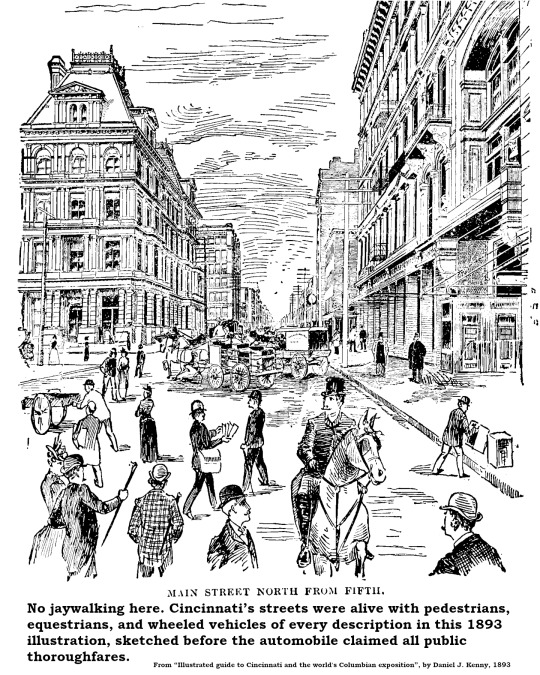
During election season, Cincinnati’s streets filled with torchlit political parades. On at least one occasion, a parade filled Vine Street from Fourth Street to McMicken with chanting men waving flaming brands, lighting the clouds above with a rosy glow. When any dignitary showed up in town, they were expected to speechify from their hotel balcony and people thronged the street below, halting traffic as they cheered. People crossing the street from any direction weren’t “jay walking.” They were just “walking.” The automobile changed all that.
Horse-drawn vehicles and electric streetcars killed a fair number of people, but the motor car quickly notched more than a hundred fatalities and many more injuries every year. Local media often blamed the victims. The Cincinnati Post [8 January 1916] piled on:
“Fourth-st. is the mecca of Cincinnati’s jay walkers. Most of the jay-walking is done between Vine and Race-sts. The other day we counted 20 persons crossing the street at different points at one time – and none was using a cross-walk. Fortunately accidents are rare on this street because of the extreme care exercised by autoists.”
It appears not to have occurred to the writer that this behavior, just five years previous, would have been considered normal.

The hammer landed in 1917. Cincinnati joined the ranks of other auto-infested cities that criminalized jaywalking. The new law went into effect in May of that year, restricting automobiles to no more than 8 miles per hour in the business district and 15 miles per hour in residential districts. For the first time, pedestrians were restricted to sidewalks and crosswalks. Pedestrians – literally – fought the new law. According to the Post [23 May 1917]:
“Theodore Mitchell, 38, agent, 631 Maple-av, is the first person to be arrested on a charge of jay-walking since the new traffic ordinance went into effect. Traffic Patrolman [Edward] Schraffenberger charged Mitchell attempting to make a short cut at Fifth and Walnut streets. When reminded of his mistake, Mitchell became angry, Schraffenberger said. Mitchell, charged with disorderly conduct and violating the traffic ordinance, was cited to appear in court Thursday.”
If you’d asked the cops, however, they would unanimously aver that the chief violators were women. The Post [21 May 1917] quoted Police Lieutenant Charles Wolsefer:
“The women are awful. They just don’t pay any attention at all. Just take a look at them crossing on Race-st.”
The reporter did so, and counted 48 jaywalkers, of whom 37 were women. A few days later, another Post reporter followed another policeman on patrol who confronted 25 jaywalkers, of which only two were men.
Among the first arrested was Miss Ella Bright of 538 Howell Avenue, Clifton, a teacher at Woodward High School. Miss Bright did not care for the attitude of the city policeman who accosted her. According to the Cincinnati Enquirer [7 June 1917]:
“She declared she had been upbraided unduly by an officer because she crossed the street in a manner which was a violation of the traffic laws after alighting from a street car.”
In August of that year, Mrs. John Mongan, 4217 Glenway Avenue, Price Hill, was arrested for striking a police officer who grabbed her arm as she executed a “Dutch Cut” (diagonal jaywalking) across the intersection at Sixth & Race.
Former U.S. President William Howard Taft, then on the law faculty at Yale, was visiting his hometown that year and blithely jogged across Sixth Street near Main, only to be corralled by Officer Joseph Schindler, who gave the law professor a little legal lesson.
The Post even enlisted its “boy reporter,” 12-year-old Freddy Printz, to test the city’s ability to enforce the new jaywalking regulations. On 7 July 1917, Freddy reported his fruitless attempts to get bawled out by a police officer. Despite blatantly jaywalking at five different locations, he only earned a polite reprimand from one officer.
While the local constabulary was doing their best to enforce the new laws, the automobiles were merciless. On 21 May 1918, the Post reported on the 25th traffic fatality of the year. The victim, a 12-year-old girl, was the twelfth child killed by an automobile that year.
Curiously, although Cincinnati outlawed jaywalking, the city had omitted one very important detail that might have contributed to compliance with the new law. A letter signed only “Chicagoan” appeared in the Post on 13 June 1917. The writer suggested that, like other cities attempting to get pedestrians to cross at intersections, Cincinnati should assist pedestrians by painting white lines on the street to mark approved pedestrian crossing paths. Cincinnati’s mandatory crosswalks were unmarked!

8 notes
·
View notes
Photo










Paramount Pictures was founded on May 8, 1912.
#Paramount Theatre#Denver#Boston#Art Deco#Colorado#Massachusetts#tourist attraction#Paramount Building#Midtown Manhattan#New York City#Paramount Pictures#founded#8 May 1912#anniversary#US history#USA#original photography#travel#vacation#exterior#logo#façade#landmark#clock#architecture#cityscape#neon sign
0 notes
Photo

A new species of giant Eunice (Eunicidae, Polychaeta, Annelida) from the east coast of Australia
Joana Zanol, Pat Hutchings
Abstract
A new giant species is described from New South Wales, Australia. Eunice dharastii sp. nov. differs from described Australian species and is most similar to E. aphroditois (Pallas, 1788), E. flavopicta Izuka, 1912, and E. kinbergi Ehlers, 1868.
The unique combination of features that characterizes the new species is irregular articulated prostomial appendages; antennae reaching back beyond chaetiger 4; branchiae starting at chaetiger 10, initially button-shaped and distinctly longer than notopodial cirri where best developed; dorsal fleshy knobs on anterior chaetal lobes; notopodial cirri pendulous, abrupt tapering from inflated bases; bidentate compound falcigerous chaetae with both teeth directed laterally, distal tooth much shorter than proximal tooth in median and posterior chaetigers; and dark bidentate subacicular hooks starting at chaetiger 58, tapering to a small head with both teeth directed distally, and proximal tooth much larger than minute and spur-like distal tooth.
This new species lives in sandy sediments in coastal waters 1–8 m deep. It is highly mobile and not easy to collect, which may explain why it was not described before.
Read the paper here: https://zookeys.pensoft.net/article/86448/
156 notes
·
View notes
Text
More Blue Castle Year Thoughts
Following from the Olive's Dead Fiance and Barney's timeline posts:
What, if anything, does Barney's personal timeline add to our understanding about the story's year of occurrence?
TL;DR: We have a lot of slightly vague data, but I think it adds up to the story opening between 1918-1923. My personal preference is for the story opening in 1919-1920, with Barney's return to Canada corresponding with the beginning of the war.
I think the main dating factors we can glean from Barney's story is: 1) his world travels, particularly the three years jaunting about Europe, Africa, and Asia, would be a lot more difficult during the war years of 1914-1918; 2) he himself manages to avoid conscription and pressure to enlist, which suggests that the war* either happened before he was old enough, or after he's headed off to the Yukon; and 3) his ex-fiancee is widowed young, a factor which may or may not be related to the war and flu pandemic. [Per the Canadian War Museum, conscription of men aged 20-45 started in 1917; 1914-1916 all enlistments were voluntary.]
Putting this together, and with 1925 as the last possible starting date for the book, in order for it to conclude in 'the present', some possibilities:
Possibility 1: The book starts around 1925, with Barney born in 1890, and his two years in the Yukon aligning with the end of the war around 1917-1918, then his three years gallivanting around 1919-1921-ish. He stayed in college instead of enlisting at the beginning of the war, then was off in the Yukon during the conscription period (though the army would have been an option for running away from his life, he apparently decided the being alone in the wilderness was better for a broken heart.) The problem with this timeline is that he doesn't have 3-ish whole years to tour Eurasia & Africa between the end of the war and arriving in Muskoka at T-5 years. In this arrangement, Ethel would be marrying right around 1918, and widowed at an unknown time between 1918-1926.
Possibility 2: Barney' did his traveling during the war, which puts an extra danger element to working his way to Britain on a cattle boat, etc. He avoids military service by being out of the country. South Africa and Spain, though hard to get to with all the fighting in the Atlantic, are at least theoretically open to him to visit. I have no idea if/how he could have made it to China, Italy, and Samarkand. In this timeline, the book opens as early as 1920 or as late as 1924, with Barney having arrived in Muskoka anywhere between 1915-1919 (and with his traveling years ranging between 1912-1915 and 1916-1919). In this version of events, Ethel marries around 1914-18 (and is widowed within 8 years). I think this is the least likely option.
Possibility 3: Barney traveled before the war, possibly coming back to Canada five years ago because the war at sea made going abroad less feasible. This puts the story date at 1920 or earlier, with Barney traveling no later than 1911-1914 and buying the Mistawis cabin in 1914/15 at the latest. In this version, Ethel is married by 1912 and widowed by 1921 (prime time for her presumably-young husband to die in the war or pandemic).
Looking into the McGill angle, the college was founded in 1821, which doesn't help our timeline for Barney. His one-time fiancee Ethel Travers received her B.A. there as well, which indicates she graduated in 1888 or later (the first year women received degrees). While we don't know that she graduated the same year as Barney, it is likely she completed her degree before marrying, which we know she did 2 years after Barney left. This puts an utmost earliest possible year on TBC at 1896 (assuming Ethel was in that first class, graduated the same year she married, and was still a student during her engagement to Barney) or at 1902 (assuming Ethel and Barney finished the same year but met later, and that she's in that first class). Both of those assume she's in the first class of women receiving degrees in 1888, with any later year moving the story back accordingly, as would her having completed school before she even met Barney, much less got engaged to her husband. Also, the fact that they didn't meet until after Barney graduated might point to her being younger or older than him, though I'd expect the social pressure on her to marry, much as we saw with Valancy and Olive, would make it less likely that conventionally-beautiful (socially connected, of good family, ostensibly rich) Ethel was unattached at 24+ when she met 23-year-old Barney. However, I think the details we get elsewhere in the story point to a much later date than the 1890s-1900s, making much of this branch of speculation pointless.
Other details we have from the story:
Fashion-- Short-sleeved dresses have been worn in Deerwood for at least a year when the story starts, and Port Lawrence has a shop which stocks low-necked dresses with low waists. By the end of the story, "flappers" are mentioned as hanging around the Deerwood train station. While we associate flappers with the 1920s, Vanity Fair wrote about them in 1914, as did Pearson's, and the Saturday Evening Post in 1912. A quick N-gram shows the term in use through the 1910s and 1920s, peaking in published uses around the time The Blue Castle came out. [Note that "flapper" doesn't mean "unconventional young woman" in all of those instances--some at least are mechanical patents and the like which refer to a piece of machinery by that term. By I think the overall trend line is useful, and helps solidify that our story is in the 1910s or early 1920s.] In the same vein, Valancy's new styles follow the classic 1920s low-waisted look, though examples of this silhouette appear at the tail end of the 1910s. Depending on how fashion-backward Deerwood is, style-wise Valancy's present-day really could be anywhere from about 1918-1925.
Hair styles-- Valancy started wearing her hair up (~age 16) while some form of the pompadour was "still" in style, but low puffs are the fashion when she's 29--also bobs are not yet in, though "shingle" hairstyles are known. The terms are too widespread for an N-gram, since there are too many other uses for "bob" and "shingle", but browsing through Googlebooks, I'm seeing lots of magazine references to pompadours in the 1908-1910 range, with very few by the mid-1910s. This intriguing court transcript suggests they were "in" in 1910 and "out" by 1912-13, though pompadour variations do pop up later, as in this 1915 beauty book. Taking the N-gram I made above, overall uses of the word pompadour peaks around 1907, ranging mostly between 1900 and 1915, and the first few pages of results from 1915 onward are talking about a man's haircut. All in all, I'm quite willing to take that 1900-1915 range as marking the time when Valancy started wearing her hair up, and with the language of "still" and the fact of pompadour being out of fashion at the time the novel opens as evidence that we're really looking at the later part of the range for her being a teenager, say 1907-1915. Most of the printed references I've found to shingles classify them with bobs and are in the 1920-1927 range. One of these earliest runs 1920, which is also the year I found a children's story which references shingling the hair to help it grow. Prior to 1920, references to the shingle haircut are few and either specify boys are wearing the style or at least do not mention women adopting it.
The adoption of cars and use of the phrase "Tin Lizzie"-- The first is slow to spread in Deerwood, and the second has not caught on as of the opening of the story. When I searched for "grey slosson", all of the results are on this book (including people asking on car forums about whether the model is real or invented), so we can't use that as a dating guide. I made another n-gram, which suggests that the term tin lizzie really started taking odd around 1915, though we are given that Deerwood is a bit behind on such slang.
Narrative Voice-- The whole thing is written in a fairly contemporary voice, with only a few futuristic mentions of bobs being unknown and modern slang like "tin lizzie" and "old dear" suggesting that the story takes place a few years before the time of writing/publishing.
Putting all that together:
The latest year we can place the opening of the story is about 1925, which would have the end be the present. This fits with the style bits we get, but I think the narrative works better if we're a few years before this and that Barney's international travel fits better a well. The mention of a woman taking a BA at McGill places the start of the story absolutely no earlier than 1896, though the presence of cars (especially old ones) and Valancy's pompadour being several years out of date suggests a date at least twenty years later (add on the "tin lizzie" remark, and we're talking 1916 or 1917 at the earliest). Depending on just how old-fashioned the Deerwood "old family" set is, I think we're fairly safely set 1918-1923.
Specifically, I like the idea that this story starts in May 1919 or 1920. That sets Barney's retreat to Muskoka right when the Great War starts making international travel difficult (and provides a further reason, beyond 'book sold, maybe time to write another book about the Canadian wilderness?' for why he changed his MO from constantly moving to settling in one place). It also explains why Barney apparently never served (32-34 years old, living in an isolated spot), and situates the deaths of two* young men mentioned in the book (Olive's first fiance and Ethel's husband) within a time window in which a lot of otherwise healthy young men were at increased risk of death from war and/or flu (respectively between 1911-1914, and 1912-1921). Valancy's personal style timeline sees her first putting her hair up when pompadours were all the rage in 1906 or 1907, but looking several years out of date by the time of the story opens; her subsequent decisions to cut her hair and start wearing the new fashions put her eccentrically ahead of the curve in 1920, while allowing Montgomery to opine that bobs were "not yet in" when she did so (a more problematic statement in 1925, when bobs are very much in style).
*Cousin Gladys also had a son who "died young" though we don't have concrete information about what age this was at; the fact that her surviving son is old enough to be "always fighting" with her suggests that we're talking teen to adult in the present, so it's possible that the other died as a young man rather than in childhood.
#the blue castle#blue castle book club#blue castle spoilers#applying the forbidden magic of math#overthinking it
21 notes
·
View notes
Text
Today the Church remembers the 108 Blessed Polish Martyrs.
Orate pro nobis.
The 108 Blessed Polish Martyrs were Roman Catholic Christians in Poland killed during World War II by the Nazis, either in the concentration camps or by mass slaughter on the streets. The group comprises 3 bishops, 79 priests, 7 male religious, 8 female religious, and 11 lay people. There are two parishes named for the 108 Martyrs of World War II in Powiercie in Koło County, and in Malbork, Poland.
The 108 Blessed Martyrs were beatified on 13 June 1999 by Pope John Paul II in Warsaw, Poland.
List of Martyrs
Bishops
1. Antoni Julian Nowowiejski (1858–1941 KL Soldau), bishop
2. Leon Wetmański (1886–1941 KL Soldau), bishop
3. Władysław Goral (1898–1945 KL Sachsenhausen), bishop
Priests
1. Adam Bargielski, priest from Myszyniec (1903–1942 KZ Dachau)
2. Aleksy Sobaszek, priest (1895–1942 KL Dachau)
3. Alfons Maria Mazurek, Carmelite friar, prior, priest (1891–1944, shot by the Gestapo)
4. Alojzy Liguda, Society of the Divine Word, priest (1898–1942 KL Dachau)
5. Anastazy Jakub Pankiewicz, Franciscan friar, priest (1882–1942 KL Dachau)
6. Anicet Kopliński, Capuchin friar, priest in Warsaw (1875–1941)
7. Antoni Beszta-Borowski, priest, dean of Bielsk Podlaski (1880–1943, shot near Bielsk Podlaski)
8. Antoni Leszczewicz, Marian Father, priest (1890–1943, burnt to death in Rosica, Belarus)
9. Antoni Rewera, priest, dean of the Cathedral Chapter in Sandomierz (1869–1942 KL Dachau)
10. Antoni Świadek, priest from Bydgoszcz (1909–1945 KL Dachau)
11. Antoni Zawistowski, priest (1882–1942 KL Dachau)
12. Bolesław Strzelecki, priest (1896–1941 KL Auschwitz)
13. Bronisław Komorowski, priest (1889–22 March 1940 KL Stutthof)
14. Dominik Jędrzejewski, priest (1886–1942 KL Dachau)
15. Edward Detkens, priest (1885–1942 KL Dachau)
16. Edward Grzymała, priest (1906–1942 KL Dachau)
17. Emil Szramek, priest (1887–1942 KL Dachau)
18. Fidelis Chojnacki, Capuchin friar, priest (1906–1942, KL Dachau)
19. Florian Stępniak, Capuchin friar, priest (1912–1942 KL Dachau)
20. Franciszek Dachtera, priest (1910–23 August 1942 KL Dachau)
21. Franciszek Drzewiecki, Orionine Father, priest (1908–1942 KL Dachau); from Zduny, he was condemned to heavy work in the plantation of Dachau. While he was bending over tilling the soil, he adored the consecrated hosts kept in a small box in front of him. While he was going to the gas chamber, he encouraged his companions, saying "We offer our life for God, for the Church and for our Country".
22. Franciszek Rogaczewski, priest from Gdańsk (1892–1940, shot in Stutthof or in Piaśnica, Pomerania)
23. Franciszek Rosłaniec, priest (1889–1942 KL Dachau)
24. Henryk Hlebowicz, priest (1904–1941, shot at Borisov in Belarus)
25. Henryk Kaczorowski, priest from Włocławek (1888–1942)
26. Henryk Krzysztofik, religious priest (1908–1942 KL Dachau)
27. Hilary Paweł Januszewski, religious priest (1907–1945 KL Dachau)
28. Jan Antonin Bajewski, Conventual Franciscan friar, priest (1915–1941 KL Auschwitz); of Niepokalanow. These were the closest collaborators of St Maximilian Kolbe in the fight for God's cause and together suffered and helped each other spiritually in their offering their lives at Auschwitz
29. Jan Franciszek Czartoryski, Dominican friar, priest (1897–1944)
30. Jan Nepomucen Chrzan, priest (1885–1942 KL Dachau)
31. Jerzy Kaszyra, Marian Father, priest (1910–1943, burnt to death in Rosica, Belarus)
32. Józef Achilles Puchała, Franciscan friar, priest (1911–1943, killed near Iwieniec, Belarus)
33. Józef Cebula, Missionary Oblate, priest (23 March 1902 – 9 May 1941 KL Mauthausen)[
34. Józef Czempiel, priest (1883–1942 KL Mauthausen)
35. Józef Innocenty Guz, Franciscan friar, priest (1890–1940 KL Sachsenhausen)
36. Józef Jankowski, Pallotine, priest (1910 born in Czyczkowy near Brusy, Kashubia (died 16 October 1941 in KL Auschwitz beaten by a kapo)
37. Józef Kowalski, Salesian, priest (1911–1942) , priest beaten to death on 3 July 1942 in the KL Auschwitz concentration camp
38. Józef Kurzawa, priest (1910–1940)
39. Józef Kut, priest (1905–1942 KL Dachau)
40. Józef Pawłowski, priest (1890–9 January 1942 KL Dachau)
41. Józef Stanek, Pallottine, priest (1916–23 September 1944, murdered in Warsaw)
42. Józef Straszewski, priest (1885–1942 KL Dachau)
43. Karol Herman Stępień, Franciscan friar, priest (1910–1943, killed near Iwieniec, Belarus)
44. Kazimierz Gostyński, priest (1884–1942 KL Dachau)
45. Kazimierz Grelewski, priest (1907–1942 KL Dachau)
46. Kazimierz Sykulski, priest (1882–1942 KL Auschwitz)
47. Krystyn Gondek, Franciscan friar, priest (1909–1942 KL Dachau)
48. Leon Nowakowski, priest (1913–1939)
49. Ludwik Mzyk, Society of the Divine Word, priest (1905–1940)
50. Ludwik Pius Bartosik, Conventual Franciscan friar, priest (1909–1941 KL Auschwitz); of Niepokalanow. These were the closest collaborators of St Maximilian Kolbe in the fight for God's cause and together suffered and helped each other spiritually in their offering their lives at Auschwitz
51. Ludwik Roch Gietyngier, priest from Częstochowa (1904–1941 KL Dachau)
52. Maksymilian Binkiewicz, priest (1913–24 July 1942, beaten, died in KL Dachau)
53. Marian Gorecki, priest (1903–22 March 1940 KL Stutthof)
54. Marian Konopiński, Capuchin friar, priest (1907–1 January 1943 KL Dachau)
55. Marian Skrzypczak, priest (1909–1939 shot in Plonkowo)
56. Michał Oziębłowski, priest (1900–1942 KL Dachau)
57. Michał Piaszczyński, priest (1885–1940 KL Sachsenhausen)
58. Michał Woźniak, priest (1875–1942 KL Dachau)
59. Mieczysław Bohatkiewicz, priest (1904–4 March 1942, shot in Berezwecz)
60. Narcyz Putz, priest (1877–1942 KL Dachau)
61. Narcyz Turchan, priest (1879–1942 KL Dachau)
62. Piotr Edward Dankowski, priest (1908–3 April 1942 KL Auschwitz)
63. Roman Archutowski, priest (1882–1943 KL Majdanek)
64. Roman Sitko, priest (1880–1942 KL Auschwitz)
65. Stanisław Kubista, Society of the Divine Word, priest (1898–1940 KL Sachsenhausen)
66. Stanisław Kubski, priest (1876–1942, prisoner in KL Dachau, killed in Hartheim near Linz)
67. Stanisław Mysakowski, priest (1896–1942 KL Dachau)
68. Stanisław Pyrtek, priest (1913–4 March 1942, shot in Berezwecz)
69. Stefan Grelewski, priest (1899–1941 KL Dachau)
70. Wincenty Matuszewski, priest (1869–1940)
71. Władysław Błądziński, Michaelite, priest (1908–1944, KL Gross-Rosen)
72. Władysław Demski, priest (1884–28 May 1940, KL Sachsenhausen)
73. Władysław Maćkowiak, priest (1910–4 March 1942 shot in Berezwecz)
74. Władysław Mączkowski, priest (1911–20 August 1942 KL Dachau)
75. Władysław Miegoń, priest, commander lieutenant (1892–1942 KL Dachau)
76. Włodzimierz Laskowski, priest (1886–1940 KL Gusen)
77. Wojciech Nierychlewski, religious, priest (1903–1942, KL Auschwitz)
78. Zygmunt Pisarski, priest (1902–1943)
79. Zygmunt Sajna, priest (1897–1940, shot at Palmiry, near Warsaw)
Religious brothers
1. Brunon Zembol, friar (1905–1942 KL Dachau)
2. Grzegorz Bolesław Frąckowiak, Society of the Divine Word friar (1911–1943, guillotined in Dresden)
3. Józef Zapłata, friar (1904–1945 KL Dachau)
4. Marcin Oprządek, friar (1884–1942 KL Dachau)
5. Piotr Bonifacy Żukowski, friar (1913–1942 KL Auschwitz)
6. Stanisław Tymoteusz Trojanowski, friar (1908–1942 KL Auschwitz)
7. Symforian Ducki, friar (1888–1942 KL Auschwitz)
Nuns and religious sisters
1. Alicja Maria Jadwiga Kotowska, sister, based on eye-witness reports comforted and huddled with Jewish children before she and the children were executed (1899–1939, executed at Piaśnica, Pomerania)
2. Ewa Noiszewska, sister (1885–1942, executed at Góra Pietrelewicka near Slonim, Belarus)
3. Julia Rodzińska, Dominican sister (1899–20 February 1945, KL Stutthof); she died having contracted typhoid serving the Jewish women prisoners in a hut for which she had volunteered.
4. Katarzyna Celestyna Faron (1913–1944, KL Auschwitz); (1913–1944), had offered her life for the conversion of an Old Catholic bishop Władysław Faron (no relation). She was arrested by the Gestapo and condemned to Auschwitz camp. She put up heroically with all the abuses of the camp and died on Easter Sunday 1944. The bishop later returned to the Catholic Church).
5. Maria Antonina Kratochwil, SSND nun (1881–1942) died as a result of the torture she endured while imprisoned in Stanisławów.
6. Maria Klemensa Staszewska (1890–1943 KL Auschwitz)
7. Marta Wołowska (1879–1942, executed at Góra Pietrelewicka near Slonim, Belarus)
8. Mieczysława Kowalska, sister (1902–1941, Soldau concentration camp in Działdowo)
Roman Catholic laity
1. Bronisław Kostkowski, alumnus (1915–1942 KL Dachau)
2. Czesław Jóźwiak (1919–1942, guillotined in a prison in Dresden)
3. Edward Kaźmierski (1919–1942, guillotined in a prison in Dresden)
4. Edward Klinik (1919–1942, guillotined in a prison in Dresden)
5. Franciszek Kęsy (1920–1942, guillotined in a prison in Dresden)
6. Franciszek Stryjas (1882–31 July 1944, Kalisz prison)
7. Jarogniew Wojciechowski (1922–1942, guillotined in a prison in Dresden)
8. Marianna Biernacka (1888–13 July 1943), executed instead of her pregnant daughter-in-law Anna, offered her life for her and her unborn grandchild)
9. Natalia Tułasiewicz (1906–31 March 1945, died in KL Ravensbrück)
10. Stanisław Starowieyski (1895–1941 in KL Dachau)
11. Tadeusz Dulny, alumnus (1914–1942 KL Dachau)
Almighty God, by whose grace and power your Holy Martyrs of Poland triumphed over suffering and were faithful even to death: Grant us, who now remember them in thanksgiving, to be so faithful in our witness to you in this world, that we may receive with them the crown of life; through Jesus Christ our Lord, who lives and reigns with you and the Holy Spirit, one God, forever and ever. Amen.
(Fr. Józef Kowalski, priest beaten to death on 3 July 1942 in the KL Auschwitz concentration camp)
(Sr. Alicja Jadwiga Kotowska, a nun killed protecting a group of Jewish children in 1939 in the mass murders in Piaśnica)

#father troy beecham#christianity#jesus#saints#god#salvation#peace#martyrs#faith#christian persecution
43 notes
·
View notes
Text


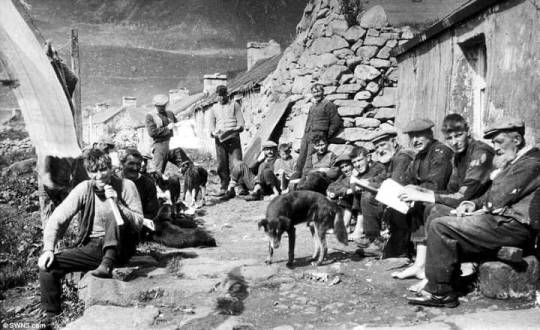


On August 29th 1930 36 people, the entire population of St Kilda were evacuated from the island.
On 10 May 1930 the people of St Kilda sent a collective letter to William Adamson, the Secretary of State for Scotland, requesting that they should be evacuated from their home. By the end of August that year the evacuation was completed and the process of resettlement on the Scottish mainland had begun. The abandonment of St Kilda is sometimes described as one of the few occasions when the ending of a community has taken place in a voluntary fashion.
Generations had struggled to scrape a living from the unforgiving land far out in the Atlantic, but the 20th century had finally caught up with the harsh reality of existence there. It was a brutal process, as they carried their possessions and their furniture on their backs to the pier, the men had the unenviable task of drowning their working dogs in the sea, as they were not allowed to take them with them to the mainland, it was either that or leave them to starve, a very harsh ending to their life on the archipelago. Their cats were left to fend for themselves, but from what I can gather were eventually all killed off by the military over the next few years.
St Kilda is not unique, other Scottish Islands were abandoned beforehand, most notably, Handa, off Sutherland which met its doom in the 1840s. Mingulay, in the Outer Hebrides that was deserted by 1912. The Islands of St Kilda though had become a curiosity, a sort of freak show for tourists to observe.
St Kilda is actually the name given to the group of islands, though most people when quoting St Kilda, really mean the largest island where the actual village was, that is actually called Hirta, I myself when posting here have occasionally just title the photos St Kilda, rather than correcting myself, lazy, a wee bit I just find it easier than explaining the Island group each post.
Hirta was occupied by humans for over two thousands of years by various residents and there were many traditions handed down the generations, traditions influenced by monks, viking sailors, medieval rulers and landowners.
What remains there now are the ruins of both their original houses, mainly blackhouse type houses, alongside slightly newer houses which had been built for them in the later years. The layout of the 19th-century village remains to this day, and over 1,400 stone-built Cleit for storing food and fuel are scattered all over the islands, and even on the sea stacs.
In 1726 a St Kildan visited Harris, caught smallpox there, and died from it. His clothes were returned to St Kilda in 1727, and brought the disease with them. Most of the islanders died, only 1 adult and 18 children survived the outbreak. However, 3 men and 8 boys escaped the disease as they had been left on Stac an Armin to collect gannets. The disease spread while they were there and nobody could go to fetch them. They were eventually rescued 9 months later. The owner of St Kilda had to send people from Harris to repopulate St Kilda.
As if the harsh conditions weren’t enough the Islanders had to cope with the effects of the First World War, the Royal Navy erected a signal station on Hirta, and daily communications with the mainland were established for the first time in St Kilda’s history. In a belated response, a German submarine arrived in Village Bay on the morning of 15 May 1918 and, after issuing a warning, started shelling the island.
Seventy-two shells were fired, and the wireless station was destroyed. The manse, church & jetty storehouse were damaged, but no loss of life occurred. As a result of this attack, a 4-inch Mark III QF gun was erected on a promontory overlooking Village Bay, but it never saw military use.
16 notes
·
View notes